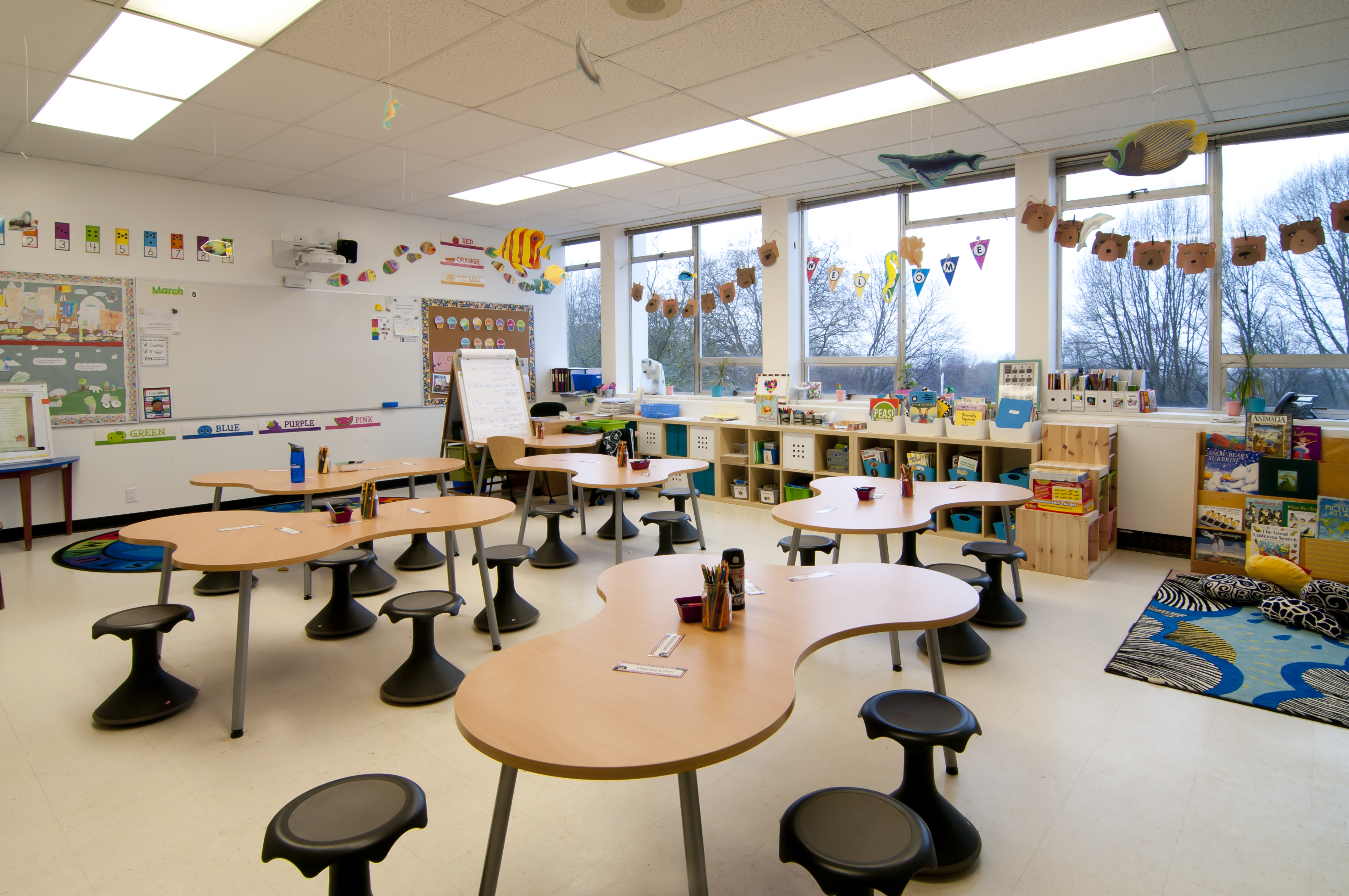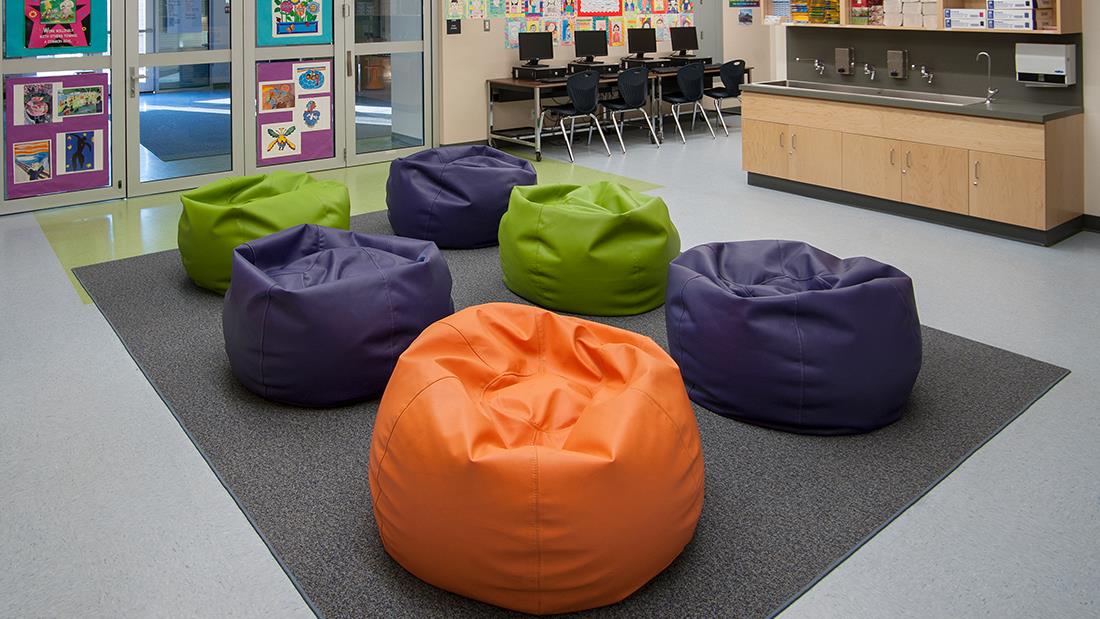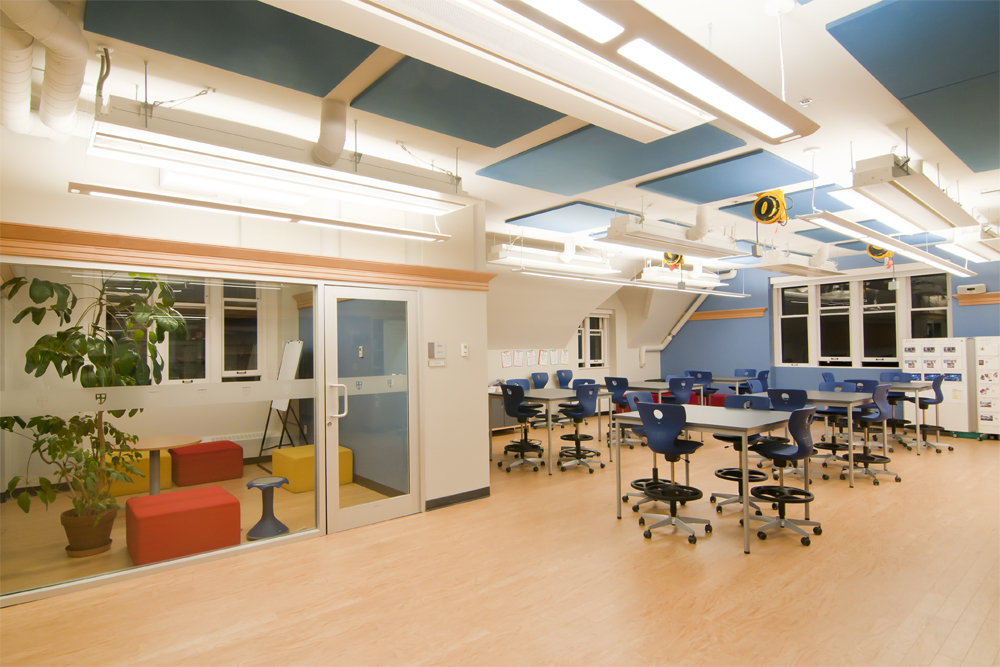
30 Sep Creating Flexible Learning Spaces: The Future of Classroom Design
The classroom of the future looks very different from the one most of us grew up with. Gone are the rows of desks, chalkboards, and rigid structures that once defined traditional learning environments. Today, the emphasis is shifting towards flexible learning spaces that adapt to the needs of students, encourage collaboration, and support a more dynamic and personalized approach to education.
In this article, we’ll explore how flexible learning spaces are revolutionizing the way we think about classroom design, and why these environments are critical for preparing students for the future.

What Are Flexible Learning Spaces?
At their core, flexible learning spaces are designed to be adaptable. This means that the physical arrangement of the classroom can easily change depending on the type of activity or learning style that’s being supported. For example, desks might be rearranged for group work, individual study, or even presentations, creating a multi-functional environment that fosters collaboration, creativity, and engagement.
These spaces often include mobile classroom furniture, modular seating, and technology integration to support different learning modes, such as:
- Collaborative Learning: Where students work in groups to solve problems or complete projects.
- Individual Study: Where students focus on their own tasks without distractions.
- Interactive Learning: Using technology like smartboards and tablets to engage students in real-time.
In short, flexible learning spaces allow teachers to easily shift between various teaching methods without being restricted by traditional classroom layouts.
Why Flexible Learning Spaces Matter
Flexible learning spaces are important because they reflect the changing needs of both students and teachers in today’s education landscape. The world has shifted towards collaboration, critical thinking, and problem-solving, and students need environments that mirror these real-world demands.
One of the primary benefits of flexible spaces is their ability to cater to different learning styles. Research shows that students learn in different ways—some may thrive in collaborative group settings, while others excel when working independently. Providing a classroom that can adjust to these diverse needs helps ensure that all students are given the best chance to succeed.
Moreover, flexible spaces support modern educational frameworks, such as project-based learning (PBL) and inquiry-based learning (IBL). Both methods encourage students to take ownership of their learning, asking questions, solving problems, and applying critical thinking skills. In these environments, students are not passive recipients of information but active participants in their educational journey.
In addition to promoting collaboration and critical thinking, flexible spaces also help students develop soft skills, such as communication, adaptability, and teamwork—skills that are increasingly important in the modern workforce.

The Role of Technology in Flexible Classrooms
Technology plays a huge role in the design of flexible learning spaces. With the integration of smartboards, laptops, tablets, and interactive apps, the learning experience becomes more engaging and versatile. Teachers can incorporate a wide variety of teaching tools into their lessons, making it easier to cater to different types of learners.
For instance, one group of students might be working on an interactive presentation on a smartboard, while another uses tablets to research information for a project. Meanwhile, others may engage in online simulations or educational games to reinforce learning concepts. This diversity of resources ensures that students remain engaged and motivated.
Moreover, technology allows for blended learning, a combination of traditional face-to-face instruction and online learning. In a flexible space, students can seamlessly transition between working with peers in a group discussion to completing an online module at their own pace.
This ability to integrate technology also prepares students for the modern digital workplace, equipping them with the tech skills they will need to thrive in various careers.
Key Elements of a Flexible Learning Space
While there are many ways to design a flexible classroom, some key elements are consistently found in the most successful layouts:
- Mobile Furniture: Desks, chairs, and tables that can be easily moved or reconfigured allow the space to shift from individual workstations to collaborative areas in seconds. Height-adjustable furniture also supports ergonomic comfort for students of all sizes.
- Modular Seating: Providing different types of seating, from standard chairs to floor cushions or soft seating, allows students to choose how they want to engage with the material. Research suggests that giving students options in their physical environment increases engagement and autonomy.
- Technology Integration: As mentioned, interactive whiteboards, tablets, and laptops are essential tools for modern classrooms. Easy access to power outlets and charging stations is also important to support students’ use of technology throughout the day.
- Open Spaces: Creating zones for different activities—such as a quiet corner for individual work, an area for group projects, or a space for presentations—encourages students to move freely and choose the setting that best supports their learning.
- Storage Solutions: In a flexible classroom, students may work on multiple projects at once. Having accessible and organized storage solutions ensures that materials are easy to find and put away, keeping the room clutter-free.
- Natural Light and Plants: Incorporating elements of nature, such as natural lighting and indoor plants, has been shown to improve student focus, well-being, and even academic performance.
The Impact on Teachers
It’s not just students who benefit from flexible classrooms—teachers also gain a lot from these environments. For educators, a flexible space allows for more creativity in lesson planning and instruction. Instead of being confined to a single teaching style or method, they can tailor their approach based on the needs of the class.
For example, a teacher might start the day with a short lecture, followed by group discussions or hands-on activities that require students to move around and engage with the space. Teachers can also experiment with different teaching technologies and strategies, without being limited by the physical layout of the classroom.
Additionally, flexible classrooms can help reduce teacher burnout. By providing a more dynamic and engaging environment, both students and teachers feel more energized and invested in the learning process. As a result, lessons are more interactive, and teachers experience a higher level of job satisfaction.
Looking Ahead: The Future of Classroom Design
As education continues to evolve, it’s clear that flexible learning spaces will play an increasingly important role in how we teach and learn. The future classroom will be a place where students and teachers have the freedom to create, collaborate, and innovate. It will be a space that reflects the changing needs of society—one that prepares students not just to pass exams, but to think critically, work in teams, and adapt to an ever-changing world.
By embracing flexible design, we are creating classrooms that are not just rooms with desks and chairs, but dynamic, evolving spaces that inspire a love of learning and equip students with the skills they need to succeed in the 21st century.

Creating flexible learning spaces is more than just a trend—it’s a necessary shift in how we approach education. By designing classrooms that adapt to the diverse needs of students, we create environments that foster collaboration, creativity, and critical thinking. As we look toward the future, it’s clear that flexible classroom design will continue to shape the way we learn, ensuring that students are prepared for the challenges of tomorrow.
Reach out to us today to discuss your project.
References
- OECD (2019). “The Future of Education and Skills 2030.”
- Bissell, J. (2018). “Engaging Students Through Classroom Design.”
- Barrett, P., Zhang, Y., Davies, F., & Barrett, L. (2015). “The Impact of Classroom Design on Students’ Learning: A Review of the Evidence.”
- Carver, M. (2020). “Teacher Well-being and Flexible Classroom Spaces.”




No Comments